The sites are along or just off the A671 Newchurch Rd/Bacup Rd. It is a bit of a cheat as the start point is reached by bus.
5.5 miles/8.9 km
The trail comprises 30 numbered buildings and some additional unnumbered features. In addition some pictures just caught my eye on the day. Text is from the trail guide unless bracketed, which are my comments.
It was not a good day for photography.
Lancs and Yorks Bank c. Robert Wade under Creative Commons Licence as I forgot to photograph it...
-
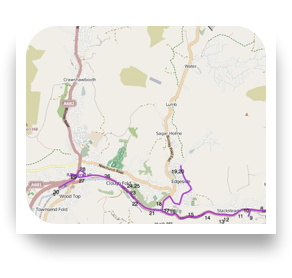
town trail
-
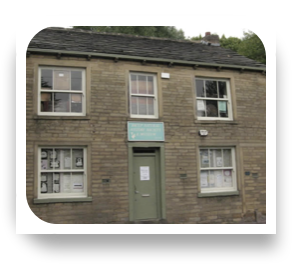
1. Bacup Natural History Society
This late 18th century building was originally the Hare and Hounds pub, and is now the headquarters of the 'Nats' who moved here in 1948. The front sandstone is slightly 'water shot' and the stone blocks ae well shaped ('dressed'); this stone is considered an inferior product and could possibly have come from the old Heald Quarries north of Bacup. Wavy lines in the stone indicate 'ripple imitation',
-
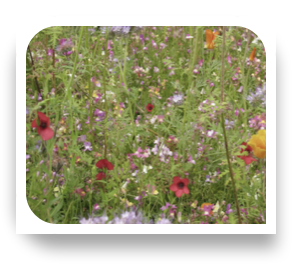
(on the verge beside the Natural History Society building)
-
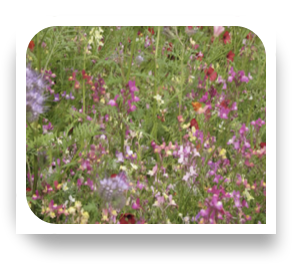
-
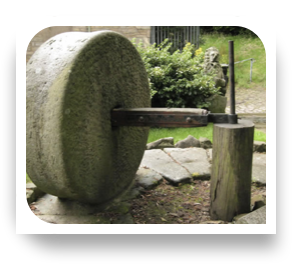
2. Wall of History
In the gardens next to the Natural History Society, there is an unusual collection of sandstone and gritstone carved display stones and datestones that mark buildings and events in Bacup's history. The large grindstone and crushing circle were removed from Guide quarry on Todmorden moor in 1979. They are made of gritstone and were used to produce sand in a process called 'sand-knocking'. Before the days of linoleum and carpets, sand was sprinkled on the floors of houses.
-
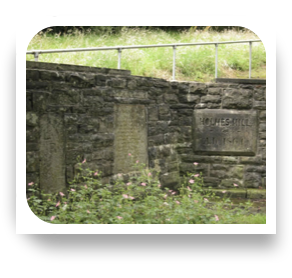
-
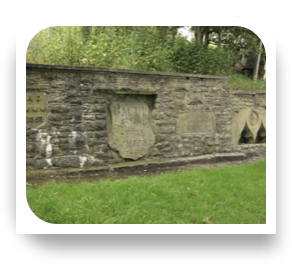
-
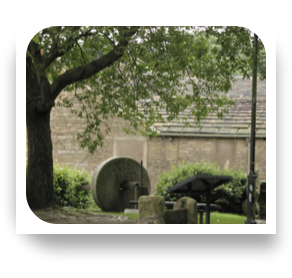
-
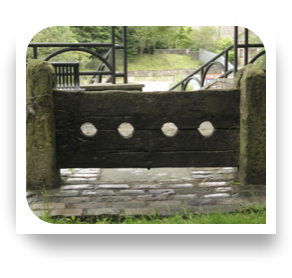
-
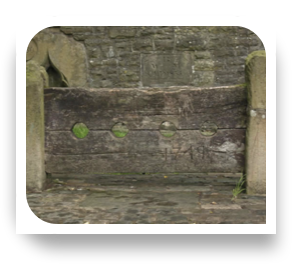
('1749' carved in the lower section)
-
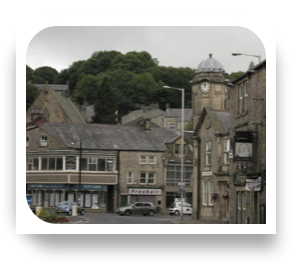
(view Bacup)
(English Heritage regard Bacup as one of the best surviving examples of a stone built mill town.)
-
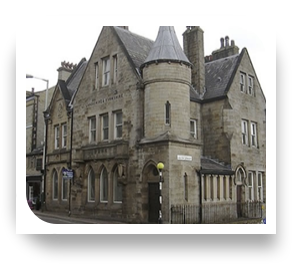
Lancashire and Yorkshire bank
This is built from gritstone (Rough Rock) sourced from an old quarry near the centre of Bacup (behind the Maden Children's Centre). The building dates from 1877 and was designed by local architect Harry Thorndyke Percival.
-
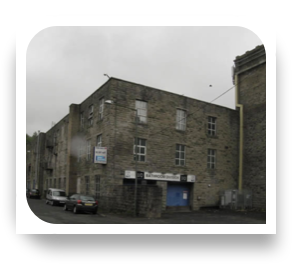
3. Forest Mill
Henrietta St. Built in 1854 for James Howarth and two brothers and continued to produce cotton for longer than most mills in the district. The main building has thick beds of strong, 'pitch-faced' local Haslingden Flag. Although the chimney has gone, the water tower survives.
-
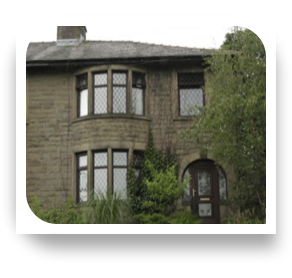
4. 4 Park Crescent, New Line
Messers Caygill Brothers built two pairs of semis sometime after 1938. They quarried Haslingden Flags in Cragg Quarry above Cowpe and probably supplied the pitch-faced sandtone.
-
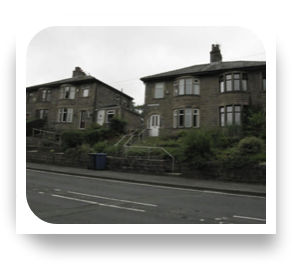
-
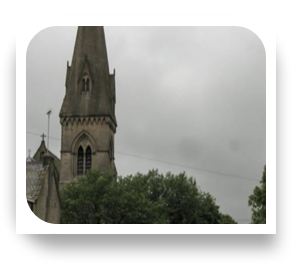
St Saviours Church
Built in 1864-65 and designed by architect Edward Wyndam Tarn who opened a new local quarry on the Holt estate to finish the building. Gritstone was used with an interplay of 'pitch-faced' and smooth ashlar textures.
-
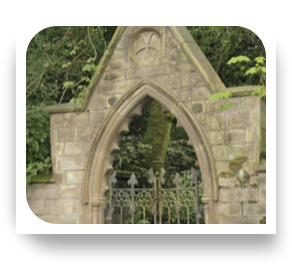
(gates, Stubylee park)
-
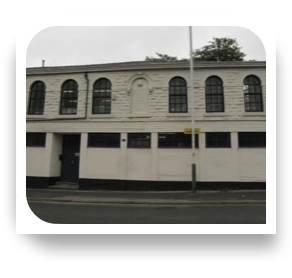
5. Lee Mill
121/125 Newchurch Road. An 1868 datestone records this building as the former Bacup Co-Operative Store, Number 3 Branch. The shape of the datestone neatlyn matches the upper arched windows. Although the stone is painted, it is clearly 'pitched-faced'.
-
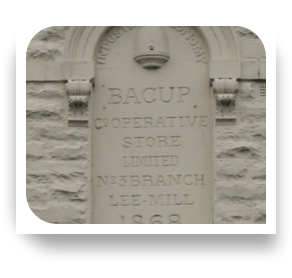
detail, Lee Mill
-
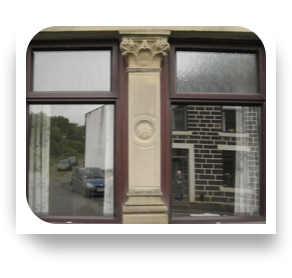
6. 4a Lee Rd
Richard Williams, 'Owd Williams', a locally well known architect, surveyor and stone dealer, is linked to this building. he took a lease out on land in 1871 and is recorded as stone dealing in an 1875 trade directory. He ran a stone rubbing mill on land through the adjoining square arch. his initials are carved in the 1873 dated window, with intricate Masonic symbolism, so he probably lived or worked here. the stone work is 'pitch-faced' Haslingden Flag, probably from a 'proto' Lee Quarry.
-
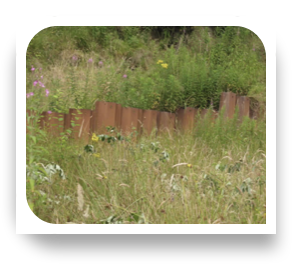
(Lee Rd iron walling)
(There are many examples in Rossendale of stone flag being used as boundary fencing, including the lane in Springhill and St Mary's Place below. This is an unusual variant, with iron pieces instead.)
-
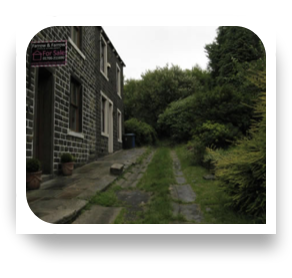
7. 21 Flag St
This small 'street-scape' evokes all the old atmosphere of former quarrying. The terraced houses are 'pitch-faced Haslingden Flag and number 21, 19 and 17 were build in 1902 by Thomas Jackson of Lee quarry. The upper section shows superb examples of early paving using local flagstones, with flags sett and kerbs and most notably double 'causeys' or causeways with grooved channels cut by rims of heavy stone trucks.
-
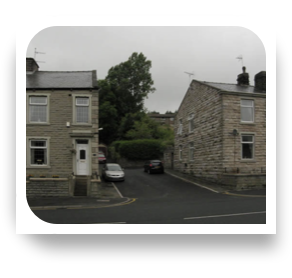
8. 141a Newchurch Rd
This recently sandblasted terrace shows (left) courses of 'pitch-faced' Haslingden Flags with door frames, windows and quoins (corner stones) finished in smoother gritstone. There is a good contrast with the next terrace 141-131 (right), with its coarser white to ginger gritstones of Rough Rock.
-
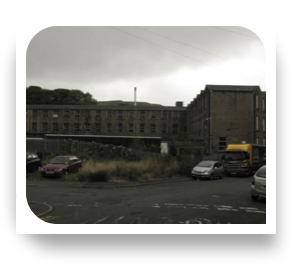
9. Farholme Mill
Farholme Lane. Built in 1853-1854 by the first co-operative company - 'The New Bacup and Wardle Commercial Company', this mill was the largest of its time. It is really 4 storeys high with arched windows to former cellars and the coursed stonework is 'water-shot' with a punched texture.
-
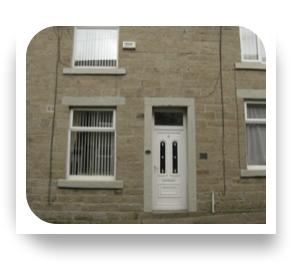
10. 6 David St
The terrace shows an original 'street-scape' with flage, setts, kerbs and channels or drains, now unusual in Rossendale. The houses have well coursed 'water-shot' stonework with punched faces. All material is Halingden Flagstone including lintels and door jambs.
-
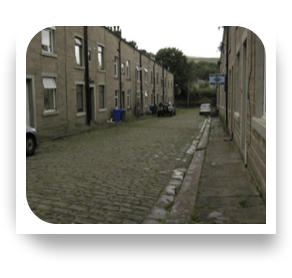
David St
-
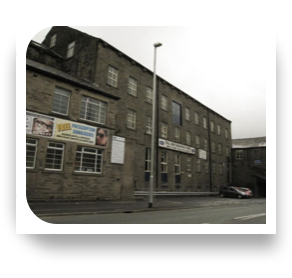
11. Toll Bar
Built in 1833 for Robert Mumm and brother John, it is now the oldest entire mill still standing in the Bacup area (aka Stacksteads Mill), and at the time, it was the largest spinning mill. Overlll the material appears to be Haslingden Flag with roughly punched 'water shot' stonework and punched flagstone sills.
-
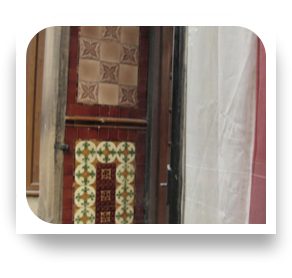
(tiles door Stacksteads)
-
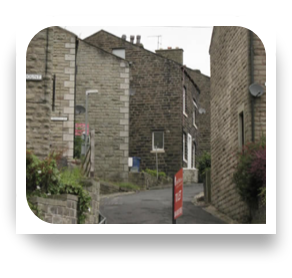
(Stacksteads)
-
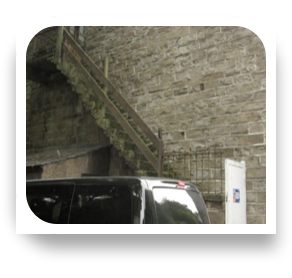
12. 366 Newchurch Rd
The cottage is reported to date from 1838 and its most distinctive feature is an outside flight of 'taking in' steps to an upper door. The steps are cantilevered in part from the wall and made from roughly punched Haslingden Flag. The facade is smoothly punched 'water-shot' sandstone coursing and the sills and jambs have a finely riged texture, perhaps made by pointed chisels.
-
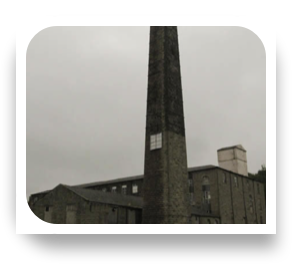
13. Atherton Holme Mill
Later Rossendale Mill, Baldwin St. Dated 1860 and originally run by the Spencer Brothers, this was a relatively large mill for the spinning and manufacture of cotton waste. It has strongly 'pitched-faced' masonry known to be from Henry Heys' quarry at Brandwood, Stacksteads.
-
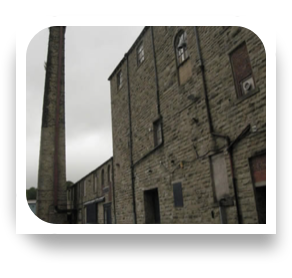
-
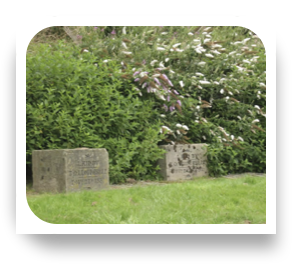
Stacksteads path of history
More sandstone and gritstone carved stones and datestones are preserved here. There are also named bricks from companies who worked the local quarries and were trying to diversify into bricks around 1900 (County, Siddalls, Shawforth and Diamond at Horncliffe).
-
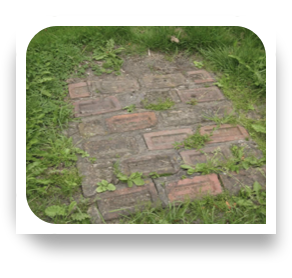
-
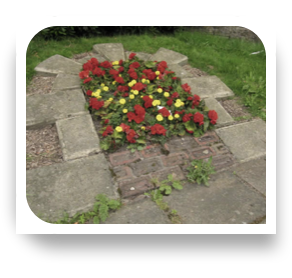
-
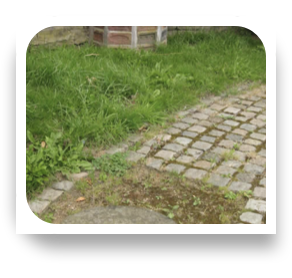
-
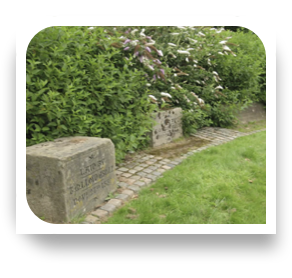
-
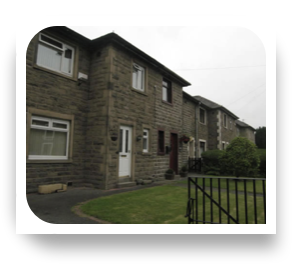
14. 520 Newchurch Rd
A possible 1930s terrace built by Messers Caygill Brothers who worked cragg Quarry. The row has 3 projecting facades and the main stonework is 'pitch-faced' Haslingden Flag with stone dressings and quoins in smoother ashlar.
-
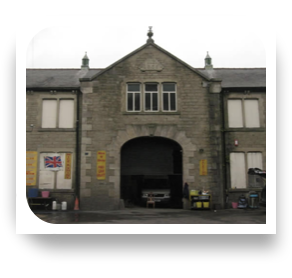
15. Village Pine
Glen Top works. The datestone JB 1868 indicates this was built as the former stables of John Baxter's Glen Top Brewery. Brewing ceased in 1955. The main masonry is punch faced, Haslingden Flag, and only slightly 'water-shot' with strong ashlar gritstone quoin stones.
-
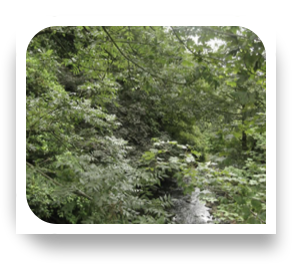
(Glen looking west )
(Left side of road. The coarse rocky outcrops are covered by foliage here. They are more exposed in the west and have been free scrambled by generations of children.
-
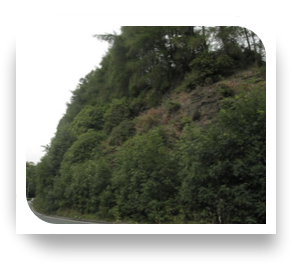
(Glen looking west)
(right side of road. The rocky nature is more evident here.)
-
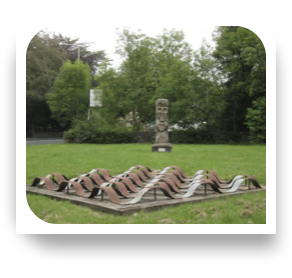
(Sculptures, Stacksteads)
The Weave, Irwell Sculputre Trail Inspiration for Michael Farrell’s Weave came from the idea of looking at fabric under a microscope and seeing the threading moving in and out of each other in a woven pattern. The colour scheme is based on gingham with two colours woven across each other. Influenced by the local industrial heritage and in particular the textile industry, the sculpture incorporates a stone flag floor from the Baltic Mill in Waterfoot. The peaks and troughs of the sculpture echo the local landscape and the surface of the Irwell River. erected 1994
-
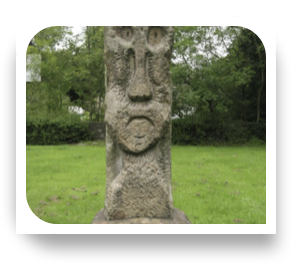
("Dedicated to the people of Rossendale by J. E. Starr, Sculptor, in memory of Annie Starr, 2010)
-
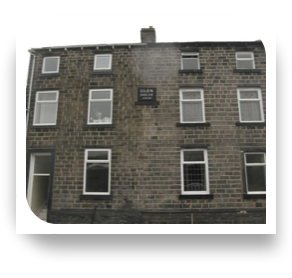
16. Glen House
652 Bacup road. Dated 1850, the building has evidence of upper 'taking-in' doors on the gable. Stonework is Haslingden Flag, including sills and Jambs and the side is roughly punched 'water-shot'/
-
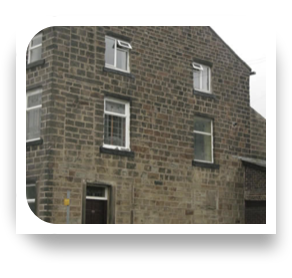
(taking-in doors on left first and second floors)
-
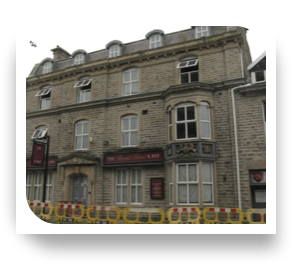
17. Royal Hotel
729 Bacup Road. built around 1864, this distinctive building has pitch faced corsing; the door head appears to be a softer rock. A bay window was added in 1876 for Baxter's Brewery, and the datestone is signed by 'Owd Williams', probably using stone from Lee Quarry.
-
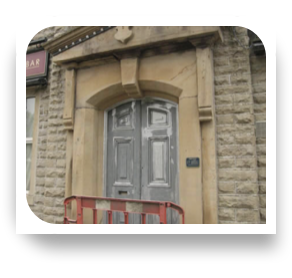
-
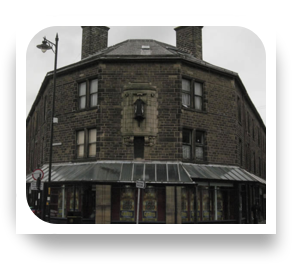
Tricket's arcade
7/23 Victoria Parade. A very early example of a shopping arcade. Dating from 1897, the p;roperties have a glazed canopy and ere designed by Samuel Taylro. Stone source is known to be Siddall's Hell Clough Quarry for the hard 'pitch-faced' Haslingden Flag; gritstone (Rough Rock) smoother ashlar dressings are from Nuttall's Lee Moor quarries.
-
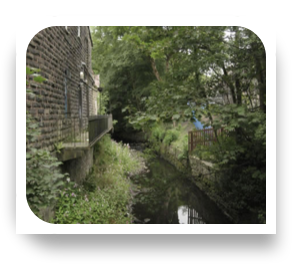
Baltic Bridge Waterfoot
Burnley Road East. A good view of the pack of a'pitch-faced' terrace ahd Haslingden Flagstone 'back landings' over the River Whitewell, with chamfered stone supports.
-
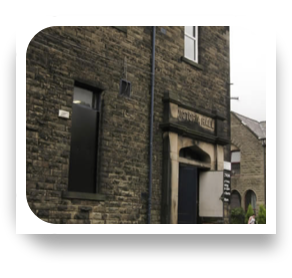
18. Waterfoot Con Club
40 Burnley Road East.. Dating from 1889, the architect was P.D.Lodge of Manchester and the builder George Benson. the 'pitch-faced' stone is Haslingden Flag from Windle's Scout Bottom quarry. Lighter coloured gritstone ashlar dressings are from Bankhouse Quarry Bacup and are Rough Rock.
-
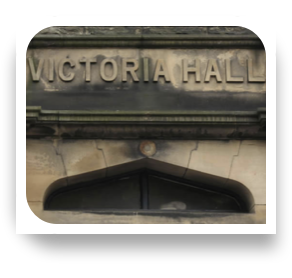
-
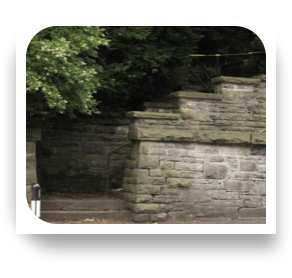
(Heys Steps)
(Burnley Road East, Waterfoot)
-
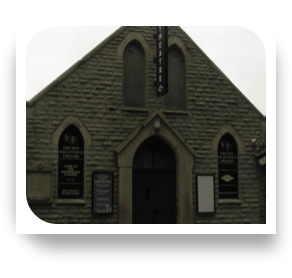
New Millenium theatre
89 Burnley Road East. Bethel Baptist Chapel of 1868 was demolished in 1996 but this former Sunday school survives. Designed by 'Owd Williams' and built with 'pitch-faced' Haslingden Flag by richard Cunliffe of Newchurch who ran Scout Bottom Quarries.
-
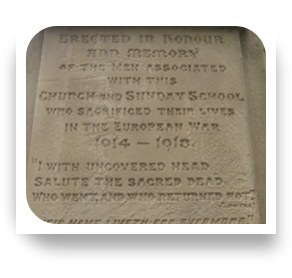
(war memorial, New Millenium theatre commemorating but not naming former members of Bethel Baptist church. Unfortunately is of soft stone and is fading.)
-
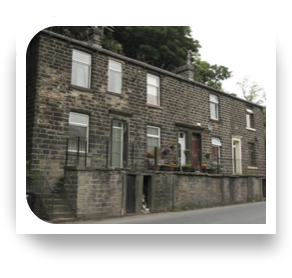
(Holts Buildings)
Burnley Road East
-
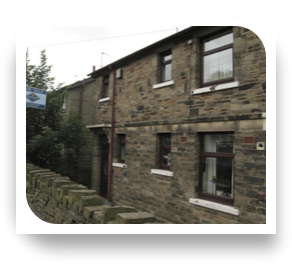
19. 153 Edgeside Lane
Under various Housing Acts from 1919 to 1936 Rawtenstall Council built many houses entirely in local stone. The stone for nearly all Edgeside estate is Haslingden Flag quarried from Edgeside Quarry. Edgeside Lane was the last part of the estate to be built.
-
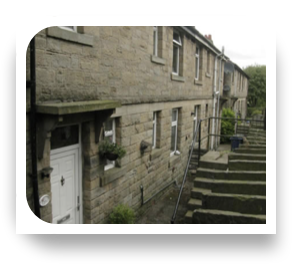
20. 123 Edgeside Lane
Edgeside Quarry closed when it was considered there was enough stone to finish the estate. However the stone supply was inadequate and the last 4 houses (121-127) were built with distinctly different, much coarser gritstone from the small quarry near Jack Lodge.
-
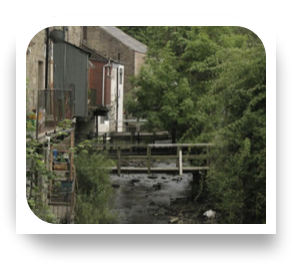
back Bacup Road
Looking southwards from Waterfoot Bridge over the River Irwell. A complex of little bridges, 'back-landings' of Haslingden Flagstone and railings and steps. The local nickname for this area is 'Little Venice' (although I've never heard it called that).
-
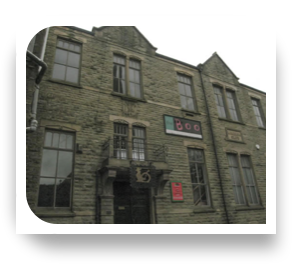
21. Horse & Bamboo
Former Liberal Club, Bacup Road. Dated 1896 this building has interesting pediments and features. the main courses are 'pitch-faced' Haslingden Flags and the dressings and stringcourses aer gritstone.
-
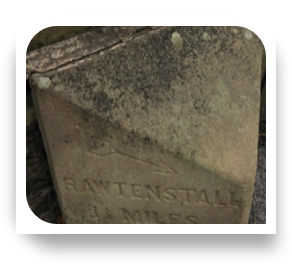
(milestone, Bacup Road)
(Rawtenstall 1 1/2 miles)
-
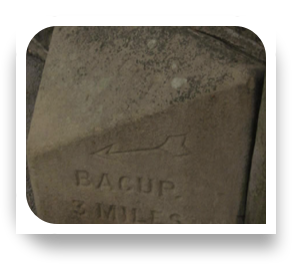
(milestone, Bacup Road)
(Bacup 3 miles)
-
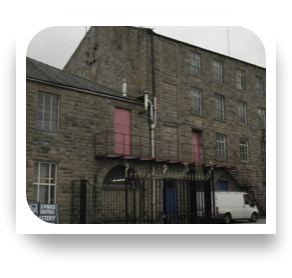
22. Kenyon's Myrtle Grove
This large mill complex has a 1890 dated keystone in gritstone over the door, referring to Richard Rostron, felt manufacturer. The 'pitch-faced' Haslingden Flag is from Hurdles Quarry on the hill above the mill, and was allegedly delivered by ariel ropeway.
-
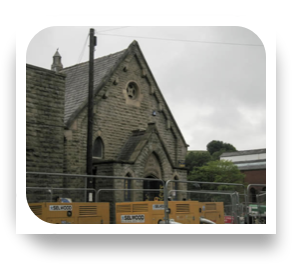
23. Hareholme Methodists
Primitive Methodist Chapel, Bacup Road. Built in 1873, it was planned and superintended by John Wilde of Oldham. The stonework is mostly 'pitch-faced' Haslingden Flag, with gritstone arching, door surrounds and mouldings. The builder was Messers George Parkinson and Sons, Newchurch, who had a quarry at 'Park House', Newchurch (possibly Edgeside Park Quarry).
-
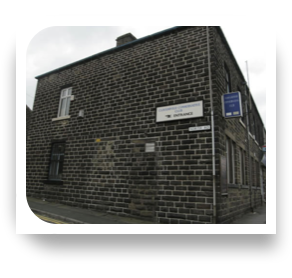
24. Cloughfold Con Club
276 Bacup Road. The main stonework is 'pitch-faced' Haslingden Flag sandstone with the dressings and window sills possibly sawn and smoothed. Stone source is Scout Bottom Quarry, Whitewell Bottom.
-
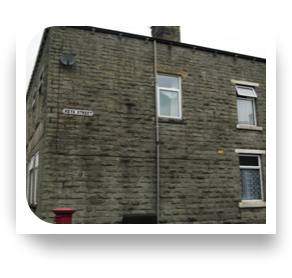
Heys St
Namve after major quarry proprietor Mr Henry Heys, who owned the land and probably built the properties.
-
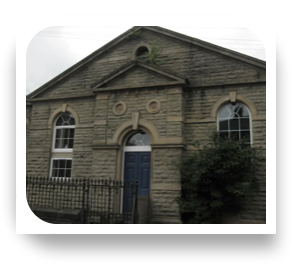
25. North Road Chapel
Former Wesleyan Methodist Chapel. Burenly architect William Waddington designed the chapel, dated 1874. The stone is Haslingden Flag, with gritstone smooth ashlar stringers and window arches. Mr Walton of Horncliffe was the contractor and builder, and as he owned Horncliffe Quarries, this is the probable stone source.
-
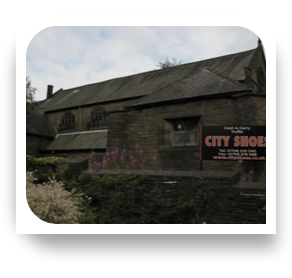
26. St John's
204 Bacup Road. Architects Paley, Austin and Paley designed the church in 1889-90. Stonework is recorded as couresd local stone, and the texture is punch faced in a 'snecked' arrangement (inserts of smaller stones). The dressings are recorded as York stone but appear to be locak gritstonein a smooth ashlar.
-
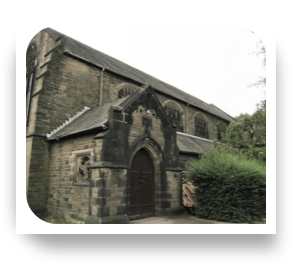
-
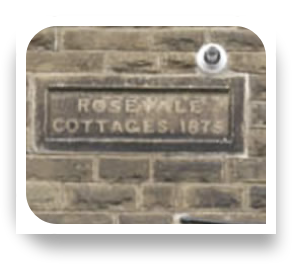
Rosevale Cottages 1875
Four terraces with dated gable ends show the progressive infil of workers' housing in the industrial heyday. All built from 'pitch-faced' Haslingden Flag.
-
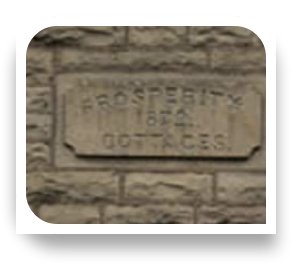
Prosperity Cottages 1879
-
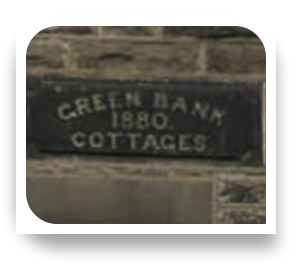
Greenbank Cottages 1880
-
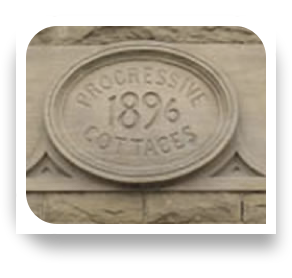
Progressive Cottages 1896
-
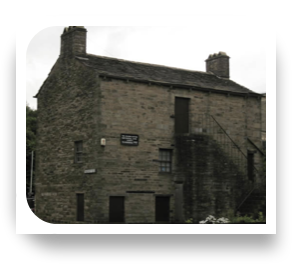
(Weavers Cottage)
(Bacup Road. A 1700s loom shop in the care of the Rossendale Civic Trust)
-
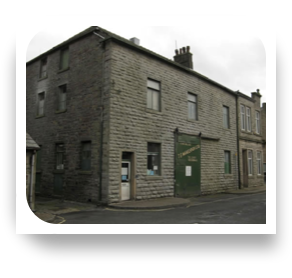
27. Mansergh's
Annie Street, Rawtenstall. Plans were drawn up for the warehouse in 1896 for Messers Hutchinson Bros who worked the stone mines at Rake Head, Stacksteads, the probable source of the stone. The 'pitch-faced' stonework is blue-grey and looks like the hardest of any of the stone on the trail - the famed 'lonkey' stone showing hardly any wear.
-
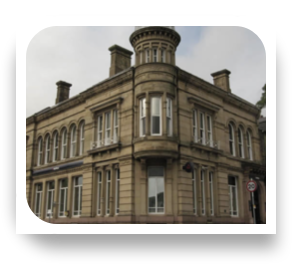
28. National Westminster Bank
36 Bank Street, Rawtenstall. A striking corner edifice, built in 1868. The architects were Mills and Mrugatroyd and contractors Messers Moore Bros Ltd, Rawtenstall. The base blocks are gritstone from Fletcher Bank Quarry on the Rossendale-Bury boundary. Stone from here was used to repair Manchester Cathedral. The main decorative stone is York Stone, favoured by architects because it is easier to carve. Polished granite dressings and door surrounds are a very attractive pink colour from the Ross of Mull.
-
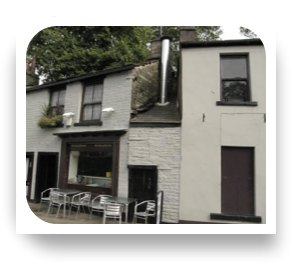
(Temperance bar, Bank St)
-
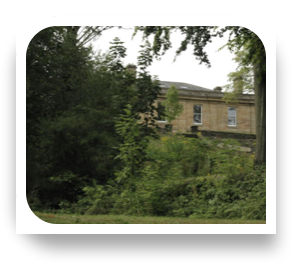
(Holly Mount House)
A recently discovered document of 1877 by geologist J. spencer states Rawtenstall's key early buildings were quarried from Millstone Grit - actually Fletcher Bank Grit - at Holly Mount, currently at the back west end of Asda car park. It is found at holly Mount, in a considerable depth, and was worked there from 1820-1845 - the Queen Hotel, the Church, the Parsonage a number of buildings in New Hall Hey, a part of the house at Holly Mount and the mills belonging to Messers Whitehead in Rawtenstall fold were built out of this rock. The stone is excellent.
-
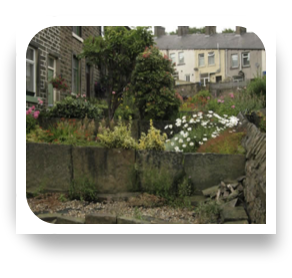
29. 10 St Marys Place
The district's best urban set of the local style of flag fencing - using upright flagstones as land dividers and taking up as little space as possible.
-
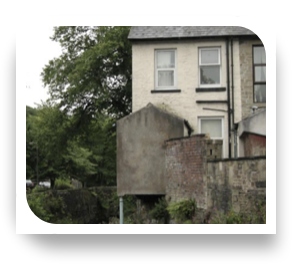
Queens St, Rawtenstall
(Kitchen supported over the Limy Water)
-
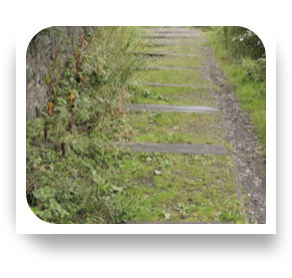
(sleepers ELR)
(The opening of the East Lancs. Railway made the transport of stone outside Rossendale much more feasible.
-
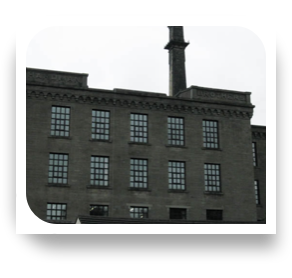
30. Hardman Bros
New Hall Hey Road. This listed building of 1862 is the highest quality stone built mill for miles around. Serious fires had damaged previous mills on the site and the owner Hardman was determined to have a fireproof millm and employed top quality masons. Owd Williams was the architect and regarded it as one of his hardest jobs, as the foundations of the chimney are partly rafted on quicksand. The Haslingden Flag came from Horncliffe Quarry, Rawtenstall, and the contract specifications for the stone survived.




